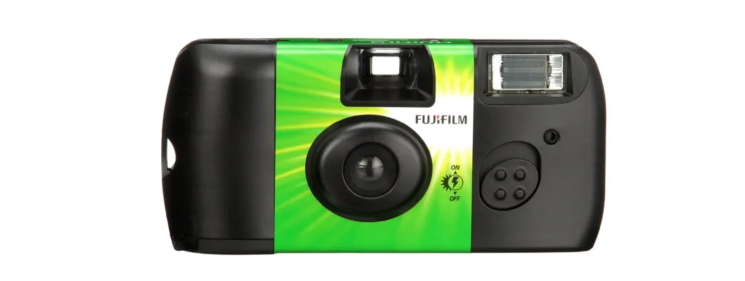Cameras that are disposable, often referred to by the name of “one-time-use cameras,” are an affordable and convenient alternative to high-tech digital cameras that people usually opt to use instead. While they may not be able to capture photographs as realistic or sharp like a top-quality film or digital camera disposable camera are user-friendly and offer a number of benefits that make them the best option over other digital or film cameras.
Disposable camera are low-cost photography equipment made of cheap materials like cardboard and plastic, and are designed for a single usage. Due to these materials and the flash feature which produces the pictures, they are distinguished by bright colors and high contrast and have a distinct appearance. They’re typically loaded with black as well as white 35mm films, which allows for exposures up to 2427. Film cameras that are disposable are built with simple point-and-shoot capabilities which means you just need to place the camera in the desired location and then hit the shutter button to create an image. the resultant images can transform into digital photos in approximately one week.
Origins of the Disposable Camera
Disposable cameras predate current digital camera by nearly 100 years; the first instance is one called the Ready Fotografer, which dates from the 19 century. The device consisted of glass as well as paper, cardboard, and with a price cost of just 25 cents. It was an amount that was far more expensive than the average handheld price of $50. If this seems like a reasonable price for a camera in today’s prices, keep in mind that in the 1880s $50 was the equivalent of $1,298.42 making the device a high-end product that most people couldn’t even dream of purchasing.
Cost was among the main reasons for the invention of disposable cameras. Not only did people desire an affordable device that could allow users to capture the most memorable moments of their lives However, they also had little regard about the camera’s features. The primary focus was the photos it took and not in the camera. In the end, businesses tried to design a low-cost user-friendly gadget that can be put away after being utilized.
The last version of these devices was released in 1949, when the Photo-Pac was invented. This revolutionary disposable camera enabled users to capture eight shots using a 35mm film at the price of $1.29 (the present price is $14.36). After the photos were taken and developed, users did not have to take any action to process the photos. They just had to send their cameras and camera equipment to the company which would process the pictures and return them to the purchaser. It was a simple procedure anyone could benefit from. Sadly, despite its amazing concept and business model
How Do Disposable Film Cameras Work?
Disposable cameras work similar to basic point-and shoot cameras. The only notable differences between them and other cameras is the materials used to make the cameras, the limited options and the number of applications. Film cameras, including digital ones, are intended to last for a long time when properly maintained however disposable cameras were made to be recycled after the development process or reused to be loaded with new film, and then sold again.
Disposable cameras consist of a fixed-focus lens made of plastic and 35mm film, or an APS cartridge either purchased separately or installed into your camera. The majority of cameras have 27 exposures, while certain cameras, based upon the type of camera you choose may come with additional features, such as additional exposures, the ability to add more film to the cameraas well as flash or filters, and even waterproofing.
The film inside the camera is contained in a container in the camera’s spool that is linked to a winding mechanism. If you’re planning to capture a photograph it is necessary to advance the film with your thumb, which is positioned over the winding mechanism, usually located in the upper right-hand corner on the camera’s back (see the image below for it).).
Basics of Disposable Camera Use and Care
Once you’ve mastered the fundamentals of the way disposable film cameras function They’re easy to use. But, there are a few suggestions that users of disposable cameras must know about how to use each of its functions and take maintain their cameras when they need to.
Do All Disposable Cameras Work the Same?
The top two companies for disposable camera are Kodak as well as Fujifilm. There are other lesser known brands for the general public produce these cameras too, such as Ilford and AgfaPhoto However, you’re unlikely to find these in general store.
However, regardless of the manufacturer has developed the camera the disposable camera functions generally in the same way. There are some characteristics that may alter their settings and functions (like flashes, or waterproof, for example) but aside from that, all require the basic point-and-shoot procedure that utilizes an electronic thumb-wheel that moves the film and then cock the shutter in order for cameras to prepare for the following shot.




